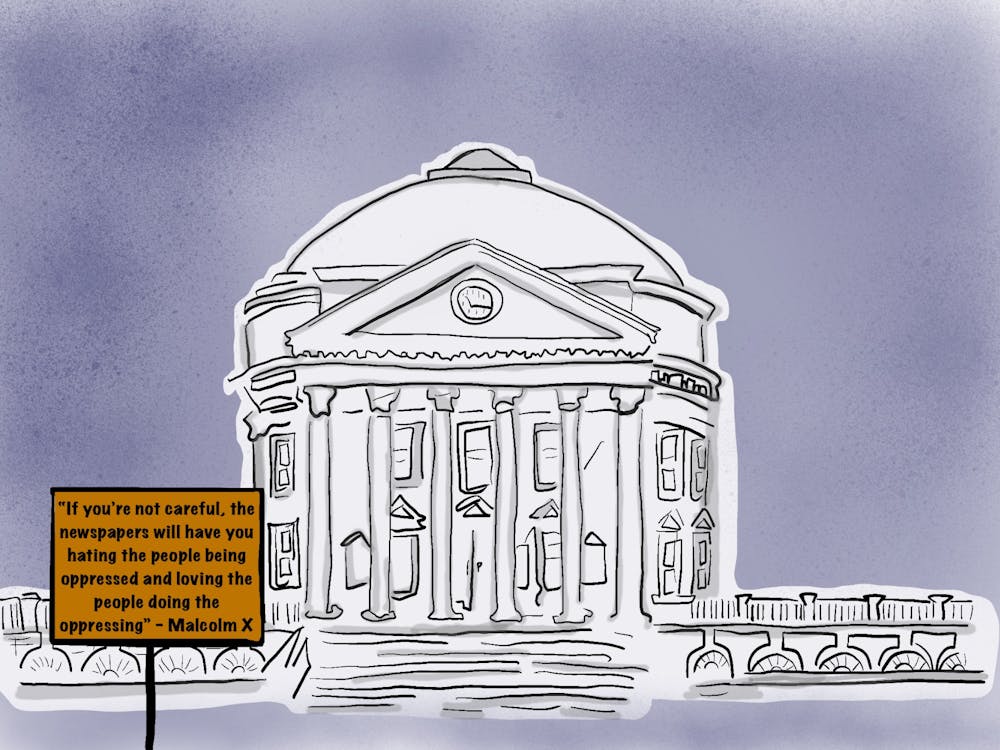Two weeks ago, my fellow Opinion columnist Alyssa Imam wrote a thoughtful article in which she advocated for the removal of SAT requirements from the University’s application process. While I understand her concerns, namely that the SAT does not strongly predict collegiate success and alienates minorities from high-ranking universities, there are several issues with her argument. Specifically, Imam neglects to take into account that the University’s size is vastly larger than the universities mentioned in her column, which is crucial because large schools need a more efficient means of predicting collegiate success amongst their thousands of applicants. Imam also overestimates the extent to which SAT scores factor into the process of deciding who gets accepted into certain colleges.
Imam points out that over 800 four-year higher education institutions in the United States do not require SAT scores from their applicants. She rightfully points out that some of these schools are incredibly esteemed “high tier” institutions. She specifically mentions Middlebury College, Bowdoin College and Wake Forest University in particular as falling on this list.
These colleges have not visibly been negatively impacted by making SAT scores optional, as they each continue to be some of the best academic institutions in the country. However , it is important to understand why such a policy might work for these schools and not the University. The crucial distinction is the application size. During this past application cycle, Middlebury, Bowdoin and Wake Forest each received 8,195, 6,935 and 11,119 applications respectively, compared to the much larger 31,021 for the University.
The impacts of such a discrepancy are enormous. Large state schools, such as the University, need some way to normalize such a large volume of applications. With applications coming from high schools of varying sizes and degrees of rigor, it is imperative that a standardized, national method of qualifying candidates be used to supplement high school grades. It is unfortunate that admissions committees at state schools, compared to the private schools Imam mentions, likely spend less time judging their applicants’ individual profiles due the sheer volume of applicants. Yet, this is precisely why large schools like the University need some sort of universal standard on which to base their selections.
Imam also overestimates the impact of the SAT on a student’s chances of admission into college. According to CollegeBoard, the institution in charge of administering the SAT, the University bases its admission decisions on a variety of factors. It claims the “very important” part of an application includes high school grades or class rank, alumni relations, teacher recommendations, state residency and racial or ethnic status. Perhaps the most important take-away from this list of priorities is the fact that SAT scores do not even fall onto the University’s list of top priorities for applicant, yet racial or ethnic status does.
Not only does the University prioritize a variety of applicant characteristics above SAT scores; the above list also demonstrates that one’s status as a minority influences their chances of acceptance more than SAT scores do. Imam is right when she says higher SAT scores are closely correlated with higher socioeconomic status, which might factor into a college’s decision to accept one applicant over another. Yet, she fails to note that colleges and the University in particular do take that into account when making their final verdicts. It is possible to argue colleges might simply want richer students to attend their institutions because they might get more future donations. Yet, the SAT is just part of the application process, and is by no means the sole factor on the minds of the admissions board.
Imam also claims SAT scores are redundant because they measure how well someone takes a test on “one particular day.” She goes on to conclude that “high school grades remain the best predictor of college grades.” Yet, SATs have a purpose also. That purpose is not to see how well someone can do on a test on one particular day; this is partially why many schools superscore SAT scores, meaning they take the best scores from each section, regardless of how many times the test is taken. The purpose of the SAT is to assess applicants from various backgrounds in a similar context. Universities understand SATs are not everyone’s strong suit. Nevertheless, it complements a university’s understanding of their prospective students’ academic abilities.
The SAT is not perfect. Yet, the University understands this, which is why it takes factors such as ethnic or racial status and high school academic records into consideration. Likewise, a school the size of the University cannot afford to forego the SAT in the way smaller private schools can. Thus, I would advise that the SAT continue to play a modest role in the admissions process.
Jesse Berman is an Opinion columnist for The Cavalier Daily. He can be reached at j.berman@cavalierdaily.com.




